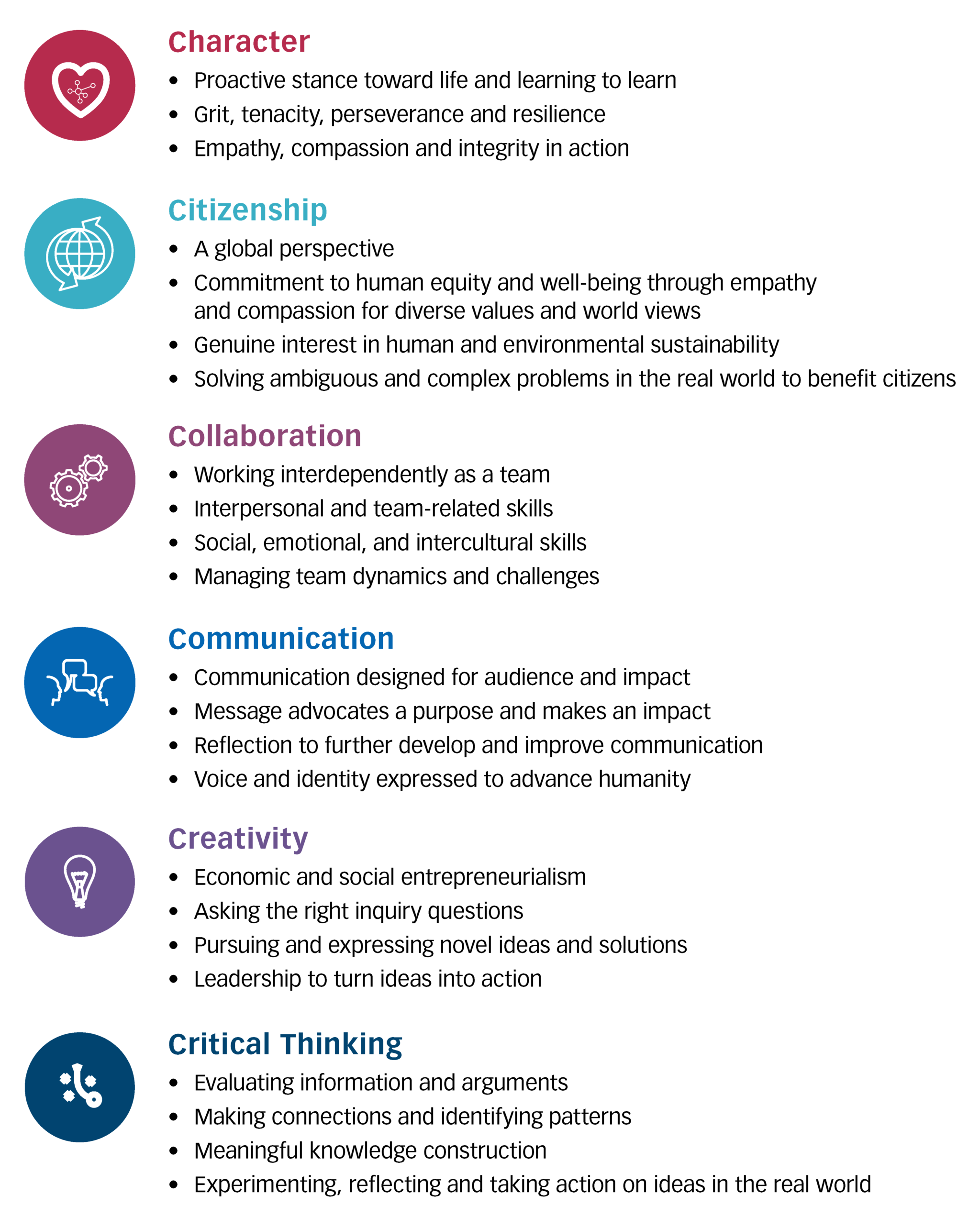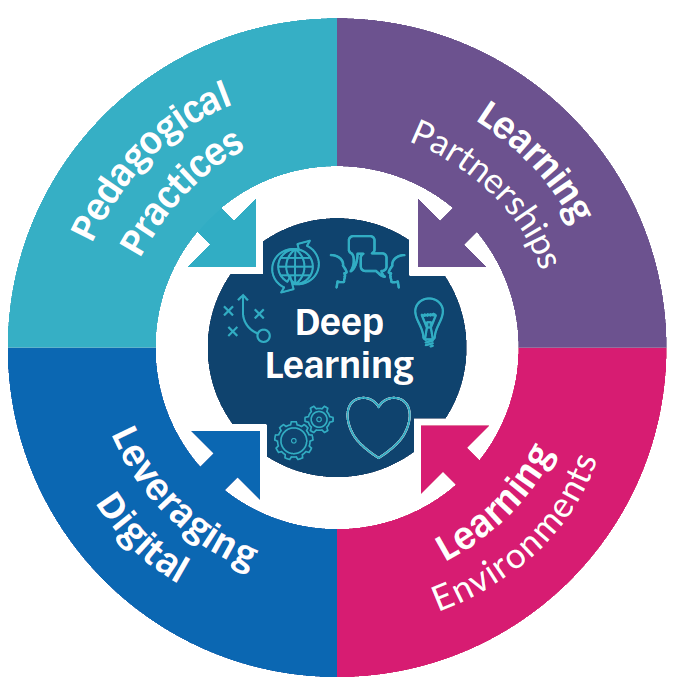Making it happen!
Get started with the Whole System Change process and the NPDL Suite of Tools so that every student can access deep learning!
Get started with the Whole System Change process and the NPDL Suite of Tools so that every student can access deep learning!
Six deep learning competencies define what it means to be a deep learner. Learning progressions for each of the 6 competencies add precision by specifying the dimensions of each competency. They are used to design and assess learning and to measure growth in the competency.

Four elements propel a shift in practice from traditional to deep learning.
 The Learning Design Process
The Learning Design ProcessFour key elements of Deep Learning design enable teachers and students to design learning experiences that are: mapped to student strengths and needs; create new knowledge using authentic, relevant problem solving; and help students identify their talents, purpose, and passion. The four elements work in concert to create the most powerful deep learning experiences. These four elements are:
Learning Partnerships
Dramatically new learning relationships that shift voice, control, and interactions are emerging and are at the heart of Deep Learning. Students and teachers aren’t only partnering with one another but are also creatively finding ways to partner with others across classes, schools, and countries and with parents, experts, and the community. The new relationships have the potential to reframe learning by connecting learners to authentic opportunities locally, nationally, and globally.
Learning Environments:
If we want cultures of learning that cultivate energy, creativity, curiosity, imagination, and innovation, then we need to create learning spaces where students feel safe in taking risks. This begins when teachers intentionally create norms of belonging in which every voice matters, model empathy, deeply listen to student needs and interests, and structure tasks so that students feel competent as learners.
The physical environment is also critical – multidimensional spaces that offer flexibility for large- and small group collaboration; quiet places for reflection and cognition; active areas for investigation, inquiry, communication, and documentation; and rich resources that are transparently accessible.
Making the walls of the classroom transparent is not merely about redesigning space; it requires taking stock of the ways we can connect inside and outside the classroom. When students are engaged, they begin to connect both inside and outside the school and make learning a 24/7 proposition.
Leveraging Digital
As we move from asking our students to be consumers of knowledge to asking them to create and apply their solutions to real-world problems, the digital world enables collaboration and multi modal communication, new ways to create and share new knowledge, and opportunities to amplify, accelerate and connect learners and learning. Effective use of digital facilitates Deep Learning, regardless of geographic location or time of day, and supports students’ capacity to take control of their own learning both within and outside the classroom walls.
Pedagogical Practices
A critical awareness of the most effective instructional strategies helps us select those with the most impact. It’s not about throwing out what we already know; it’s about putting a new lens of depth over many of the effective pedagogies that remain essential for Deep Learning. It is also about eliminating the outdated, ineffective ones. These models most often require the teacher to take on the role of activator, enabling students to have choice in and take responsibility for their learning.
Visit the Enigma Portal to view the 6 C’s and the new pedagogies in action in Wooranna Park Public School, Victoria, Australia.
Capacity building is an essential process for developing the knowledge, skills and commitment at all levels of the system needed to shift practices from traditional schooling to deep learning.
Collaborative learning is a key driver to accelerate this shift. As people learn from the work together, greater clarity and shared purpose emerge. They feel supported and challenged to persist because they see results.
NPDL provides a capacity building system of tools, processes and rich resources that accelerate this shift in designing deep learning and creating conditions that accelerate change.
Designing deep learning experiences requires new pedagogical practices and partnerships. NPDL’s Learning Design Protocol, Learning Design Rubric, Learning Progressions, and Resource Modules provide exemplars for capacity building.
Deep learning will only happen on a transformational scale when the right conditions exist at the school, cluster and education system level. Learning Conditions Rubrics and processes help leaders to; assess their organizations; develop strategies to provide conditions that will propel deep learning at all levels; and evaluate progress.
Deep Learning experiences are dramatically different from the traditional way that teaching and learning has been since the industrial age. When breaking this very new ground and bringing deep learning concepts to life, there were simply no existing assessment instruments that could adequately measure or provide clarity on student progress or performance in the Deep Learning Competencies.
To implement deep learning and the new pedagogies needed to bring it to life, we developed a series of concepts, capacity building resources, frameworks, learning labs, and a new measurement system, The Suite of Tools.
The Suite of Tools is an evaluative monitoring system designed to assess starting points, monitor progress and evaluate impact and progression of Deep Learning at all levels of the system. When combined they provide a structured and valid way of measuring and improving:
The Suite of Tools are designed to be implemented in any local context and can be seamlessly integrated with the required academic assessments in any country and system.